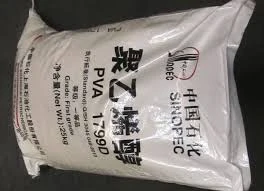The Role of Tylos HPMC in Pharmaceutical Formulations
Introduction
In the ever-evolving world of pharmaceuticals, excipients play a crucial role in the formulation of effective and stable medicines. Among these excipients, Tylos HPMC (Hydroxypropyl Methylcellulose), a derivative of cellulose, has emerged as a significant component in various pharmaceutical applications. Known for its versatility, Tylos HPMC possesses unique properties that make it essential in the development of both oral and topical dosage forms. This article delves into the characteristics, applications, and benefits of Tylos HPMC in the pharmaceutical industry.
Characteristics of Tylos HPMC
Tylos HPMC is a semi-synthetic polymer characterized by its ability to dissolve in water, forming a clear, viscous solution. This property makes it an excellent thickening agent, binder, and film-forming agent. Additionally, it is non-toxic, biocompatible, and has a low sensitivity to pH changes, allowing it to maintain stability across various environments. The viscosity of Tylos HPMC can be tailored by adjusting the degree of hydroxypropyl and methyl substitution, making it adaptable to different formulation requirements.
Applications in Oral Dosage Forms
One of the primary applications of Tylos HPMC in pharmaceuticals is in oral dosage forms, particularly in solid dosages like tablets and capsules. As a binder, it helps to ensure that all the components of a tablet blend uniformly, contributing to efficient drug delivery. Its film-forming property allows for a controlled release of active pharmaceutical ingredients (APIs), which can enhance bioavailability and therapeutic efficacy.
Moreover, Tylos HPMC is widely used in the formulation of extended-release tablets. By controlling the gel formation upon contact with gastrointestinal fluids, Tylos HPMC modulates the release rate of drugs, leading to prolonged therapeutic action. This characteristic is particularly beneficial for medications requiring steady state plasma concentrations, minimizing the frequency of dosing and improving patient compliance.
tylos hpmc

Role in Topical Formulations
In addition to oral applications, Tylos HPMC is extensively used in topical formulations, including creams, gels, and ointments. Its thickening and stabilizing properties help maintain the consistency of these products, ensuring uniform application and efficacy. As a film former, Tylos HPMC can provide a protective barrier on the skin, enhancing the delivery of active ingredients while preventing moisture loss.
Furthermore, Tylos HPMC is often employed in eye drop formulations due to its compatibility with ocular tissues. Its viscosity-imparting properties help maintain the ocular surface's moisture, thereby alleviating symptoms of dryness and discomfort.
Benefits for Formulation Scientists
For formulation scientists, Tylos HPMC presents several advantages. Its high viscosity range provides flexibility in formulation design, enabling the optimization of drug release profiles based on specific therapeutic needs. Additionally, the availability of various grades of Tylos HPMC allows for tailored solutions suited to diverse pharmacological applications.
Furthermore, Tylos HPMC is generally recognized as safe (GRAS) and is compliant with regulatory standards, making it a preferred choice in the pharmaceutical industry. Its ability to enhance stability and solubility further supports the development of high-quality, patient-centric medications.
Conclusion
In conclusion, Tylos HPMC is a multifunctional excipient that plays a pivotal role in the formulation of pharmaceutical products. Its unique properties, including viscosity, thickening, and film-forming abilities, contribute to the efficacy and stability of various dosage forms. As the pharmaceutical industry continues to innovate, Tylos HPMC will undoubtedly remain a vital component in the quest for safer and more effective medications, meeting the evolving needs of patients around the world.
-
The Application and Significance of Construction RdpNewsMay.19,2025
-
Industrial Grade HpmcNewsMay.19,2025
-
Building Coating Adhesive Building Coating Adhesive HpmcNewsMay.19,2025
-
Application Of Hpmc For Detergent For Detergent In DetergentsNewsMay.19,2025
-
Application Of Hpmc Cellulose In Cement-Based MaterialsNewsMay.19,2025
-
Application Of High Quality Hpmc For Construction In The Field Of ConstructionNewsMay.19,2025




